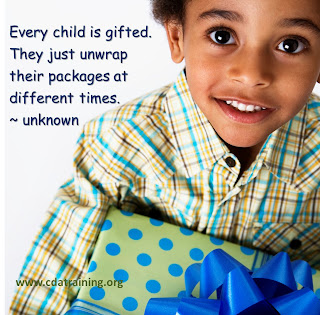Three Meaningful NAEYC Code of Ethics
I-1.1—To be familiar with the knowledge base of early
childhood care and education and to stay informed
through continuing education and training (April 2005).
This ideal is meaningful to me because as an early childhood professional I must stay informed to have knowledge to share and provide quality service to the children and their families in my care.
I-1.3—To recognize and respect the unique qualities,
abilities, and potential of each child (April 2005).
This ideal is meaningful to me because I believe every child is different with a special personality and should be shown respect and allowed to share their knowledge in their own special way.
I-1.8—To support the right of each child to play and
learn in an inclusive environment that meets the
needs of children with and without disabilities (April 2005).
This ideal is meaningful to me because I believe in providing all children the learning experience they deserve whether they have a special need or not.
NAEYC. (2005, April). Code of ethical conduct and statement of commitment. Retrieved
August 17, 2013, from http://www.naeyc.org/files/naeyc/file/positions/PSETH05.pdf
Three Meaningful DEC Code of Ethics
2. We shall demonstrate the highest standards of personal integrity, truthfulness, and honesty in all our professional activities in
order to inspire the trust and confidence of the children and families and of those with whom we work (August 2009).
This is a very meaningful ethic to me as a professional or person because when I am honest with the children and their families they will share their needs, problems and ideas.
4. We shall empower families with information and resources
so that they are informed consumers of services for their children (August 2009).
This ethic is meaningful to me because in order for families to help their child succeed the family will need the resources to do so.
1. We shall demonstrate our respect and concern for
children, families, colleagues, and others with whom we work, honoring their beliefs, values, customs,
languages, and culture (August 2009).
This ethic is meaningful to me because I know that if I want respect I must give respect in order to communicate and get the job done.
